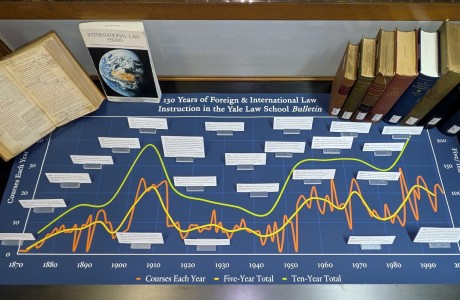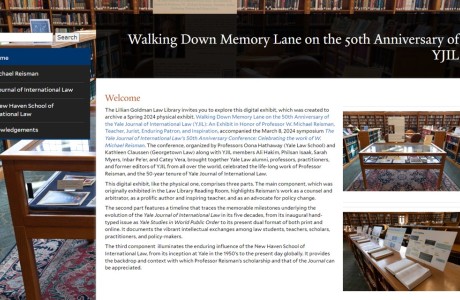Navajo Law Collection
The Foreign & International Law department of the Yale Law School Library has put together a display on Navajo law and the tribe's interactions with the U.S. federal government. The display can be found on L2 next to the Rare Books Reading Room.
Most of Yale Law School’s materials on American Indian law generously come from the Gertrude (Gigi) and Arthur Lazarus, Jr. Fund. Arthur Lazarus, Jr., who specializes in American Indian law, represented American Indian tribes in their claims against State and Federal governments, including several claims before the federal Indian Claims Commission. He also worked with Felix Cohen in Washington D.C. until Cohen’s death in 1953. Cohen, who pioneered American Indian law through his writing of the Indian New Deal and the 1934 Indian Reorganization Act, also taught legal philosophy at Yale Law School. His papers are housed in the Yale Collection of Western Americana at the Beinecke Rare Book and Manuscript Library.

Although Diné is the Navajo word for the tribe, the official name is Navajo Nation. The Navajo Nation encompasses 27,000 square miles of the states of Utah, Arizona, and New Mexico. The tribe is governed by the Navajo Nation Council, which creates and governs with the Navajo Tribal Code, first conceived in 1935 and consolidated with old tribal resolutions and federal laws in 1962. Traditional customs and values are to be considered when interpreting the code and form the basis of Navajo common law.
The Yale Law School Library features a variety of online resources for research on American Indian tribes, including the recently added American Indian Law Collection from HeinOnline. Cohen’s Handbook of Federal Indian Law, written by esteemed American Indian law scholar and Yale Law professor Felix Cohen, is described as “the single most important work in the field” and can be found in the LexisNexis database. Online resources can be accessed through the Yale Law School Library’s online research guides.

